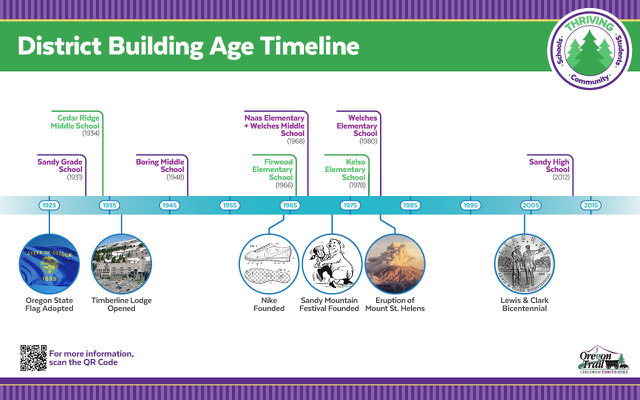District Facilities Information

Why Facilities Matter
The condition of our school buildings directly affects student learning, academic success, and the safety of our students and staff.
Our Schools Need Critical Updates
In 2008, our community rallied to build Sandy High School. Today, many of our other school buildings are aging and need essential additions and repairs. Acting today helps prevent costly emergency fixes tomorrow. The District worked with engineers, staff, parents and community members over the past two years to assess every building and identify the most urgent needs for longterm facilities sustainability, learning and safety. Key needs include:
- Aging mechanical systems, roofing and external shells need replacement/upgrades to prevent failure and costly emergency repairs.
- Schools lack core spaces like gyms and cafeterias or utilize inefficient and less secure portable classrooms.
- Buildings need security and accessibility upgrades.
- Enhanced recreational opportunities, including playground and sports field upgrades.
District Needs
The District worked with parents, staff and community members to assess buildings and identify specific projects for long term facilities sustainability, learning and safety.

Many schools rely on temporary portable classroom space or lack core education spaces like gyms, cafeterias or playground and athletic spaces. This bond will replace inefficient portables with permanent classroom spaces at schools such as Kelso, Naas and Boring Middle, add or improve cafeterias or gyms to schools including Firwood, Naas and Welches, improve playgrounds and improve athletic fields and recreation opportunities for school and community use throughout the district, including at Boring Middle, Naas, Kelso and Welches.
This bond will also improve safety, security and access throughout the district, make improvements to traffic flow for vehicles and buses, and improve access for students, staff and community with disabilities.

Siding at Welches

Boiler at Sandy Grade School

Boring Middle School roof leak

 Additional settings for Safari Browser.
Additional settings for Safari Browser.



